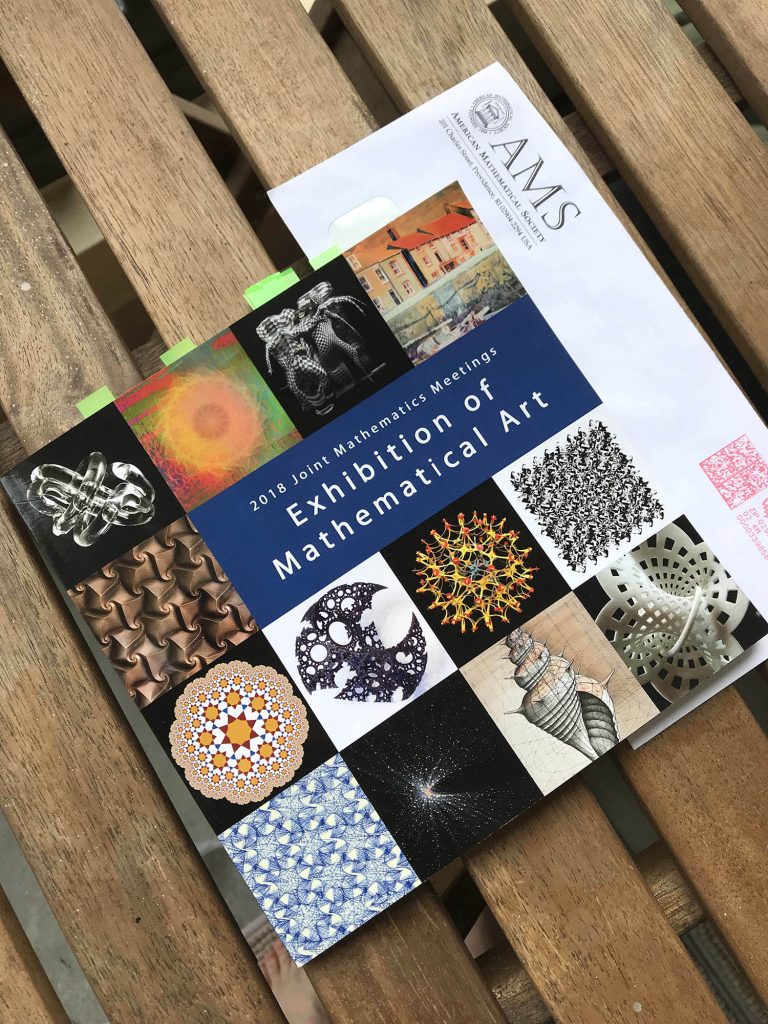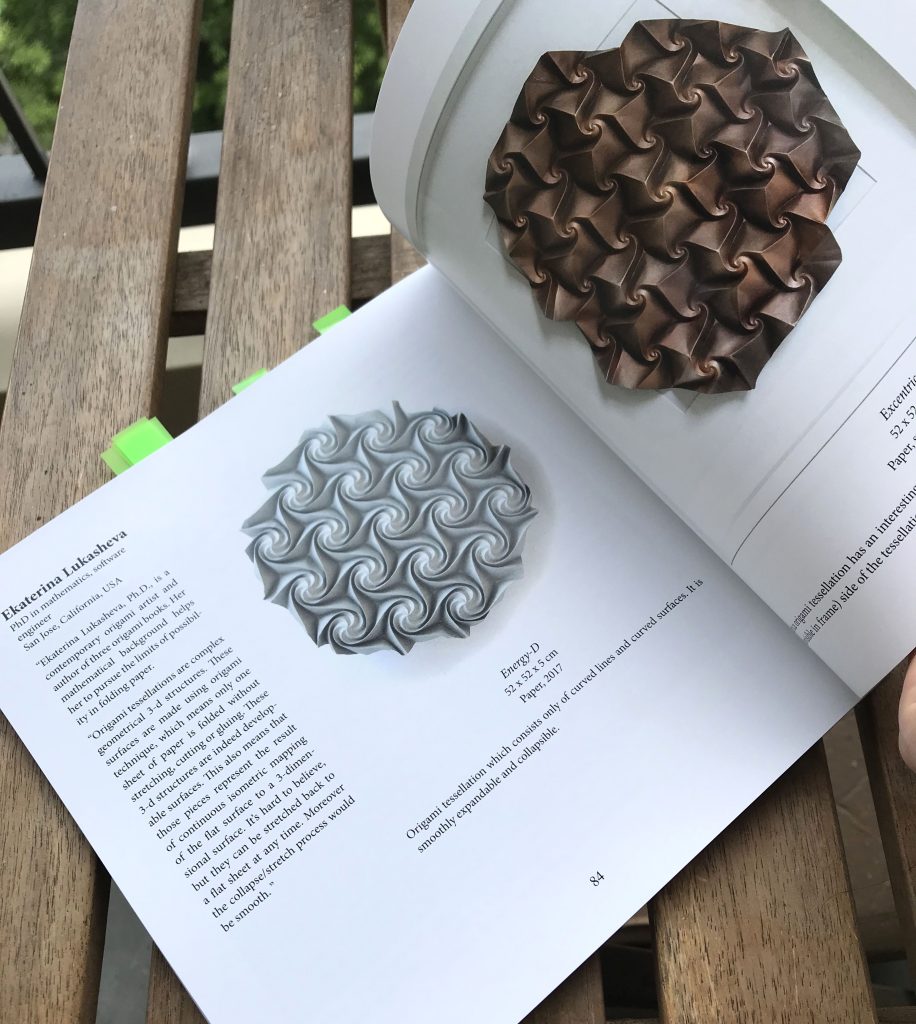Life works in mysterious ways: mathematical award
My PhD mentor always encouraged me to pursue mathematical studies even after I finish the PhD. He meant differential equations of course. Until he has seen my spiral paper foldings. Once he told me my origami is cooler than differential equations. I hope he’s proud of me, since I’ve got Honorable mention award at American Mathematical Society mathematical art exhibition for my spiral tessellations 😉 I did not expect it, so it’s even a nicer surprise.

I even got to the cover, and more covers are going to appear in the following weeks… stay tuned 😉 Excentrica is in favor this season 😉

Here it is, my darling!
The above and below images are pictures of the same origami tessellation! The above is little stretched and the below is collapsed. The stretch-collapse process is smooth and elastic. The lighting is also a bit different, so metallic pigments are working in a different way.
I need to say several words about Excentrica; I am very proud of it. I not only created the whole thing, as I usually do, but I also found the way of stacking origami molecules. I haven’t seen this way before. (please tell me if you did!). It is consisted of 2 types of molecules: triangular and hexagonal. Half of the triangular molecules point up and half down. In the picture you probably don’t mention that the lightest ones and the deepest ones are actually the same, but flipped. Hexagonal molecules are iso-area by themselves. And the tessellation is iso-area as a whole! Iso-area means that if you flip it over, it looks exactly the same. Which is magical I think.
To understand what I was just telling above look at Energy tessellation below. It is a more usual kind of tessellation. There are lots of straight-fold tessellations which are using the same method of stacking the molecules. One of them is Honeycomb tessellation. Those are just same size hexagons that tile the surface, nothing fancy in mathematical dimension. Although it does look gorgeous.




10 Replies to “Life works in mysterious ways: mathematical award”
Hello Ekaterina.
Do I can to find your book in Brazil to buy?
I have 3 books published for now, try ordering one of them from amazon or ask friends to bring it from US. I don’t know where people get books in Brazil, it might be better to ask people in Brazil how they do that 😉
Your are an amazing person, Ekaterina!! Congratulations on your mathematical award and your PhD. I did not know you were studying math at that level. Does your mathematical background help you in developing your models. Just curious, do you teach mathematics? Tessellation are so beautiful and relaxing to look at..almost mesmerizing. Can’t wait for your next book. I am not able to do a lot or origami anymore. After years of using my hands this way I have developed osteoarthritis.
But the models in your books are so beautiful to look at. I hope you keep on publishing. Good luck
.
Thank you for the kind words!
I am not sure my math background really plays the big role in my origami. I would say it’s more factors that go side by side: my love to puzzles, modulars and origami and my mathematical studies. Those things are just similar in some ways. I think for modular origami school geometry with trigonometry is more than enough. For the curved things maybe more, but more in the direction of intuition.
Oh, great! I too love puzzles, origami and maths……..but I am not as great as u! 😞 Any way I just can’t imagine any origami activity to explain calculus. Can you help me?
I can recommend you this book: https://www.amazon.com/dp/1466567910/
It is specifically about how you can use origami to explain some calculus and math stuff to students. You would need to get some basic math knowledge though 😉 Good luck!
Your work is amazing! Could you please let me know which one of your books would it be suitable for children – 9 -13 years old? Or do you suggest another book for this age of range?
I also live in Santa Clara, please let us know of any local places we could contemplate your work:)
Hi!
I think any book will be fine as long as there is an adult helping a child. Otherwise it’s too early.
I wonder if you have ever heard of Dr. David Huffman. Prior to his death in 1999, he was a professor at UC Santa Cruz and invented Huffman coding while a grad student at MIT. He was also an extraordinary pioneer of curved crease paperfolding. His daughter Elise is a friend of my wife; she was kind enough to let us see many of his pieces before she sent them to MIT, where they reside in a special collection. https://collections.mitmuseum.org/collection/david-a-huffman-collection/page/3/#collectionitems
Of course I have heard of him. Not to mention I had recently linked that exact MIT gallery from my instagram account 😀